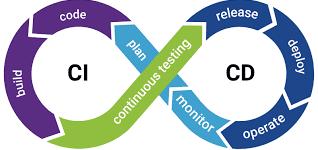Streamlining Software Release Process
Learn from my experience of tackling streamlining software release using circleci

In this case study, we will explore a project where a CI/CD pipeline was implemented for a client to automate their software release process. The pipeline was built using CircleCI and integrated with GitHub and Docker. The objective was to enhance the efficiency, reliability, and speed of the software release cycle.
Background
The client, a software development company, started to scale their business on Cloud and they need someone familiar with AWS and CircleCI. The process involved multiple steps such as building the software, running tests, and deploying it to various environments.
Solution
To address these challenges, a CI/CD pipeline was proposed and implemented using CircleCI as the chosen tool. The pipeline aimed to automate the entire software release process from code commit to deployment. The key components of the solution included:
- Continuous Integration (CI):
- Integration with GitHub: The pipeline was integrated with the client’s GitHub repository to trigger builds automatically whenever changes were pushed.
- Building: CircleCI was configured to build the software using predefined build scripts and dependencies.
- Testing: Automated unit tests were executed as part of the CI process to ensure code quality and identify any regressions.
- Continuous Deployment (CD):
- Docker Integration: Docker containers were used to package the application along with its dependencies, ensuring consistency across different environments.
- Deployment Automation: CircleCI was configured to deploy the built and tested application to various environments (e.g., staging, production) based on predefined deployment scripts.
Implementation
The implementation of the CI/CD pipeline involved several steps:
- Configuration Setup:
- CircleCI Account Creation: A CircleCI account was created for the client’s organization.
- Repository Integration: The client’s GitHub repository was connected to CircleCI for automatic triggering of builds.
- Build Configuration:
- Build Scripts: CircleCI configuration files were created to define the build process, including installing dependencies, compiling code, and generating artifacts.
- Environment Variables: Sensitive information such as API keys and credentials were securely stored as environment variables in CircleCI.
- Testing Configuration:
- Test Framework Integration: CircleCI was configured to execute automated unit tests using the client’s preferred testing framework.
- Test Reporting: Test results and code coverage reports were generated and made available within the CircleCI dashboard.
- Deployment Configuration:
- Dockerization: The application was containerized using Docker, ensuring consistent deployment across different environments.
- Deployment Scripts: CircleCI was configured to execute deployment scripts based on the target environment, deploying the Docker containers to the appropriate servers.
Results
The implementation of the CI/CD pipeline resulted in significant improvements for the client:
- Faster Release Cycle: The automation of build, test, and deployment processes reduced manual effort and accelerated software releases. Developers could focus more on coding while relying on the pipeline for repetitive tasks.
- Improved Reliability: Automated testing ensured that code changes did not introduce regressions or critical bugs. This increased confidence in the software’s stability before deployment.
- Consistent Environments: Docker containers provided consistent environments across different stages of development, testing, and production. This reduced issues related to environment-specific dependencies or configurations.
- Enhanced Collaboration: The integration with GitHub allowed for better collaboration among team members. Developers could review each other’s code changes before merging them into the main branch.
Conclusion
By implementing a CI/CD pipeline using CircleCI, integrating with GitHub and Docker, the client achieved a streamlined software release process. The automation of building, testing, and deployment resulted in faster releases, improved reliability, consistent environments, and enhanced collaboration among team members. The successful implementation of this CI/CD pipeline demonstrates its effectiveness in optimizing software development and release workflows.

Add comment
@name